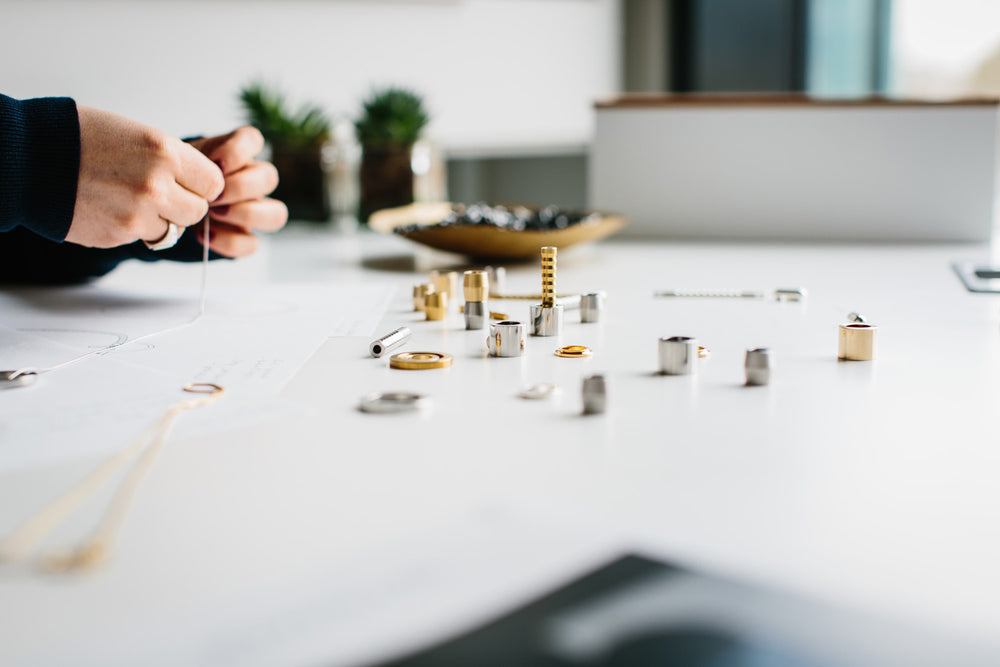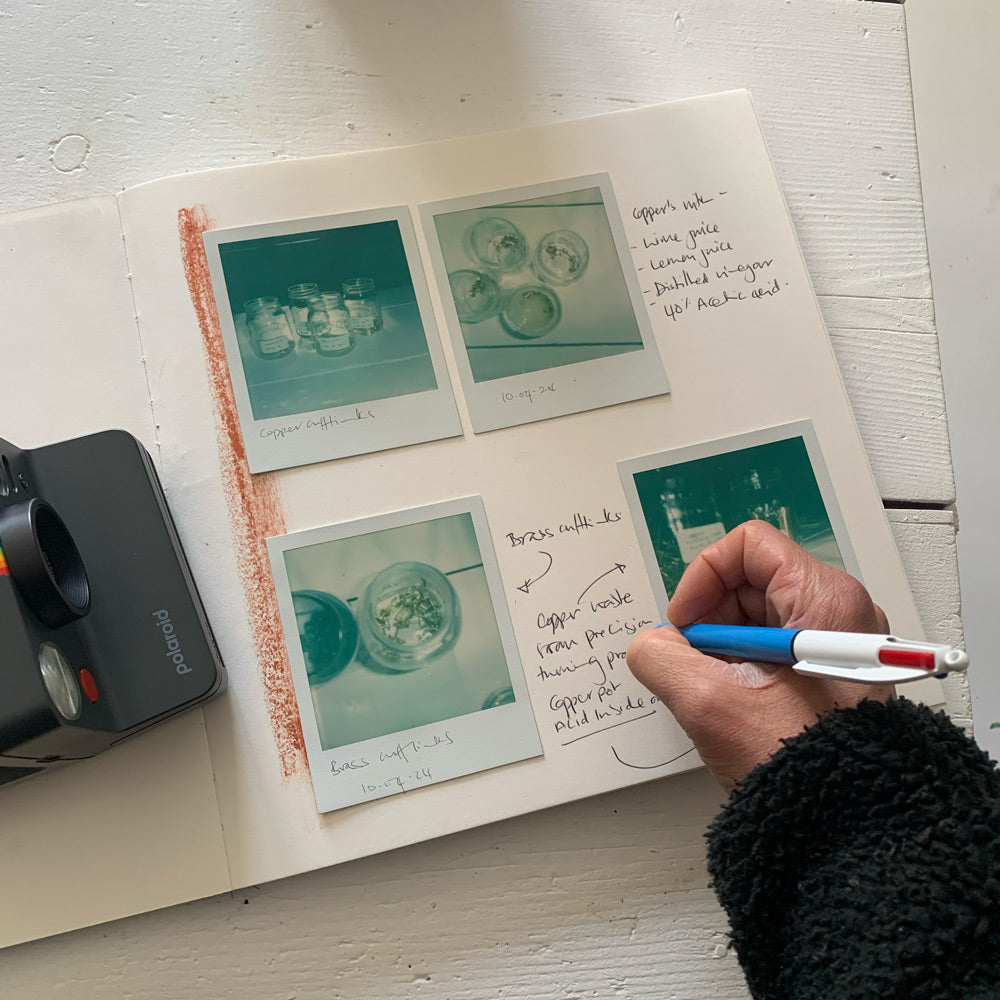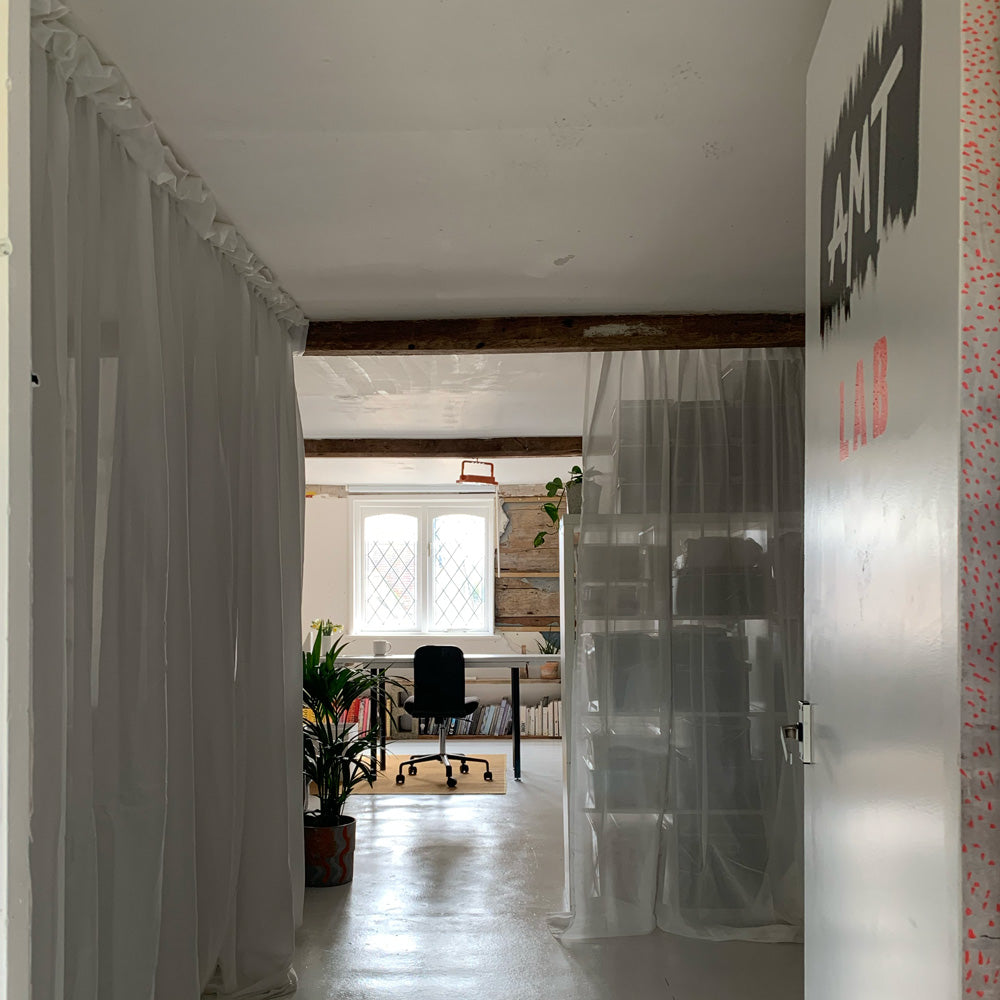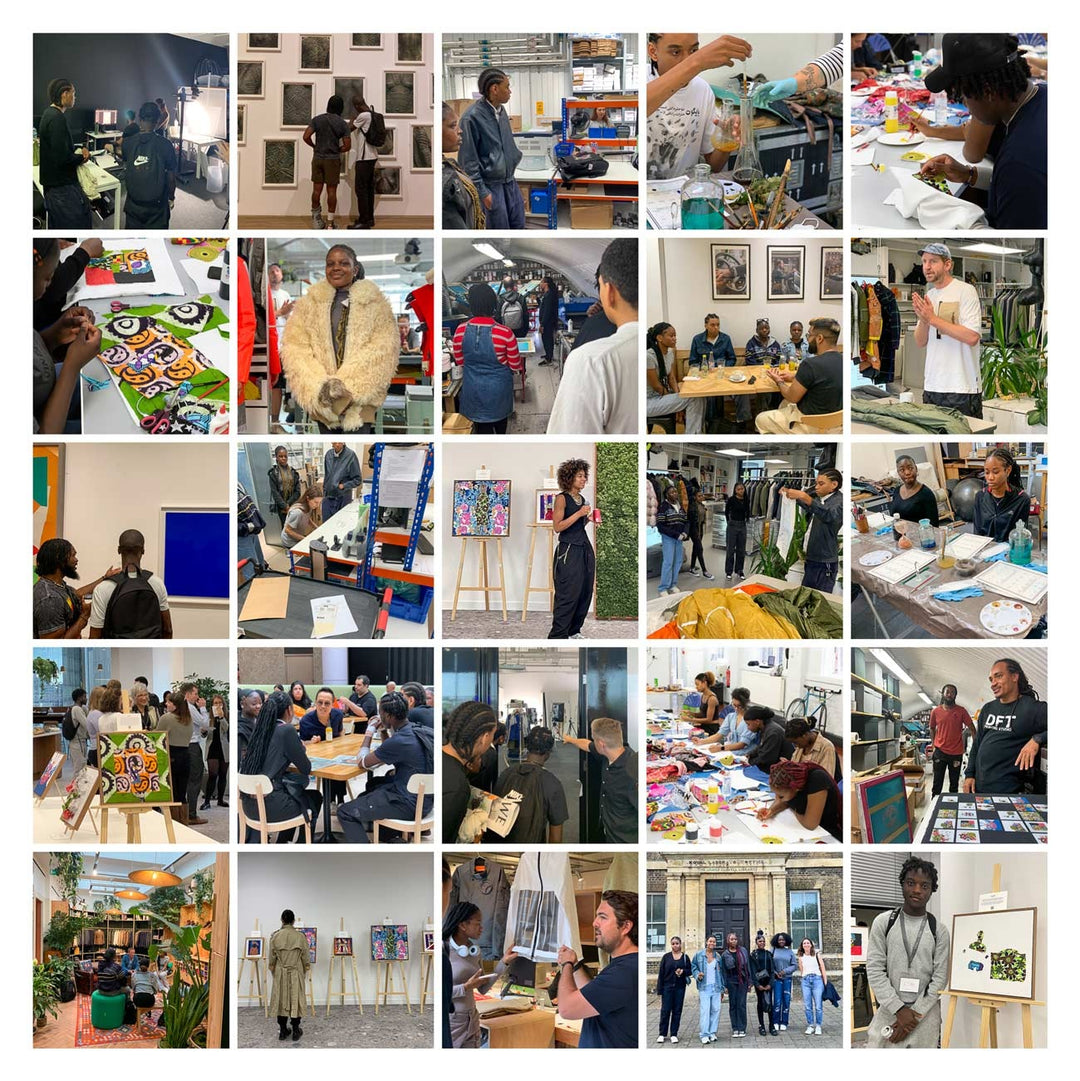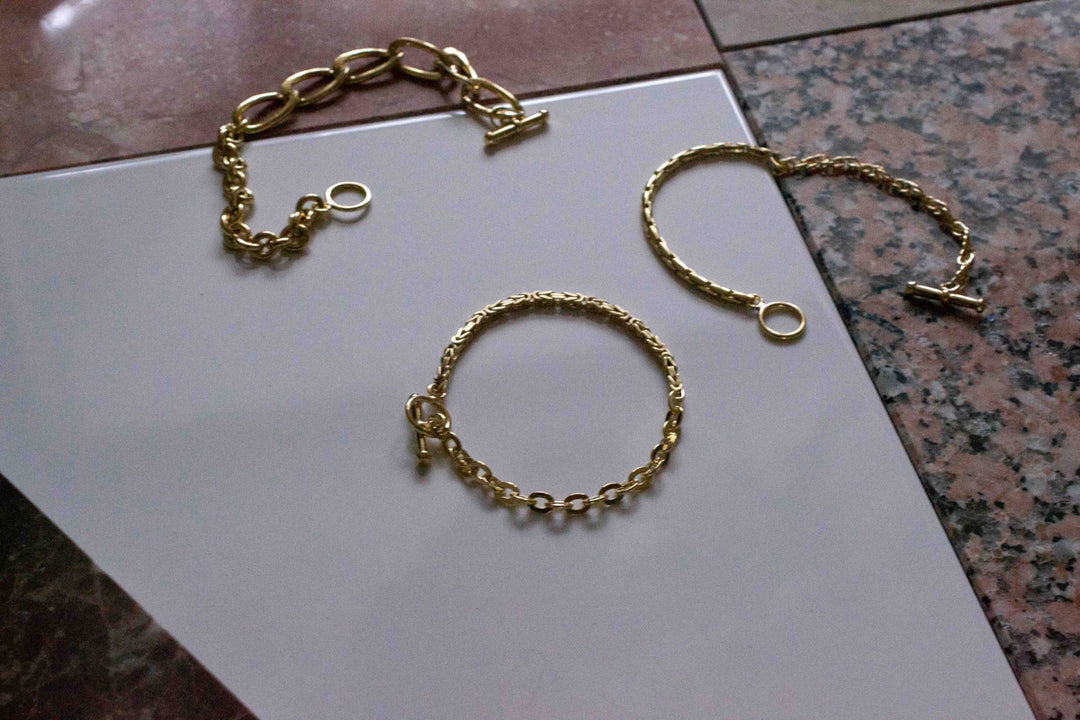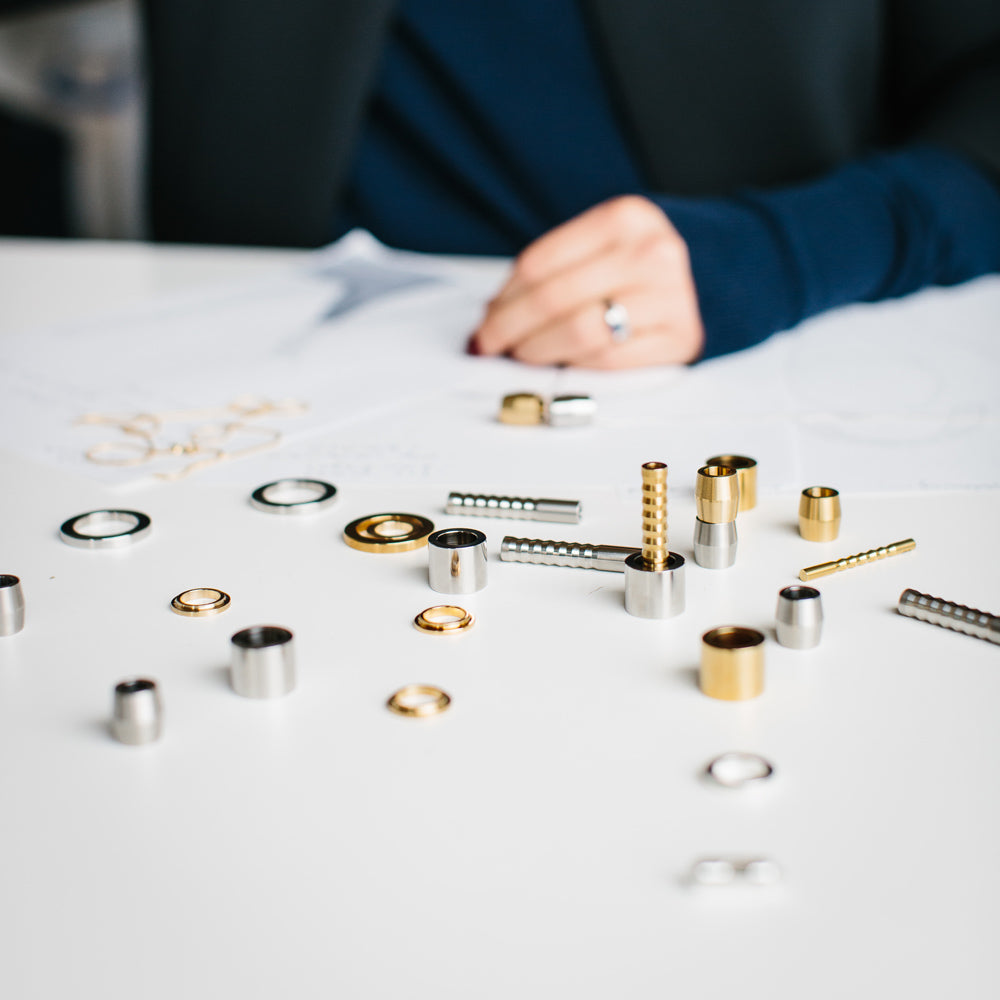The Material of Music Masters
Used across a variety of industries brass has some wonderful characteristics such as its acoustic qualities, its antibacterial merits and its exceptional machinability. We use brass for a number of our men’s and women’s jewellery pieces across our collection from bracelets to necklaces and rings. We use it in its raw solid form, precision cut by our engineers in Hertford. It is a material that cuts beautifully, allowing us to create the graphic and geometric shapes that we are known for.
Brass is an alloy of copper and zinc. Historically referred to as 'yellow copper', brass has over 40 different grades with a zinc content varying from around 5-40%. Aerospace brass has 60% to 40%, copper to zinc, giving it a 100% rating for machining. This means it officially machines beautifully and gives our brass jewellery a graphic quality that is rare to find and difficult to achieve. It is precise, accurate and refined.
Brass is a sister of bronze (copper and tin) and part of the copper alloy family. Copper is one of the first metals discovered through ancient artefacts and primitive tools or accessories. Forms of brass have also been in use since the Prehistory, Roman and Medieval era’s. However Brass’s true nature as a copper-zinc alloy was not understood until the Post-Medieval era, when the direct alloying of copper and zinc metal was introduced to Europe in the 16th century.
Here are five more reasons why we adore brass. It really does have some amazing qualities.
1. Brass is extremely malleable with good acoustic qualities, which is why you find it used for a number of musical instruments. These characteristics allow it to be stretched, hammered, or rolled without breaking, and so perfect for forming into tubes and pipes. A number of factors influence the quality of sound a musical instrument produces, including the shape, the dimension of every component, and the acoustics of the material. Brass answers all of these and in addition has a resemblance to gold, which was considered to give musical instruments added elegance to their appearance.
2. Brass is said by many to be both antibacterial and antimicrobial. When used in marine environments it prevents bio-fouling, repelling organisms such as barnacles and algae. In our daily environments, depending upon the type and concentration of pathogens and the medium they are in, brass kills microorganisms within anything from a few minutes to hours of contact. There are a large number of independent studies that confirm its antimicrobial effect, even against antibiotic-resistant bacteria such as MRSA and VRSA.
3. 90% of all brass alloys are recycled. Because brass is non-ferromagnetic it is easily separated from ferrous scrap by passing the scrap near a powerful magnet. It is separated, smelted, formed into bullions and reshaped into machinable shapes. Its lifecycle is continuous and long.
4. Brass can oxidise in the presence of air and moisture to form a patina. This layer forms to protect the underlying brass from damage. We celebrate this oxidisation process with our Patina pieces working with Derek to fast-track this beautiful process and create unique and complex surface finishes on our cufflinks, pins and art.
5. Psychologically brass offers a sense of youthfulness, positivity and clarity. With its warm yellow tones, it expresses strength, friendship and creativity. The yellow tone has a relatively long visual wavelength and is the brightest colour of the visible spectrum. It lifts our spirits and our self-esteem and is the colour of confidence and optimism.
Explore our Brass jewellery. Listen to Alice talk about our materials and process in more detail on Instagram @alicemadethis
Click here to browse our full collections of jewellery for men and women.




